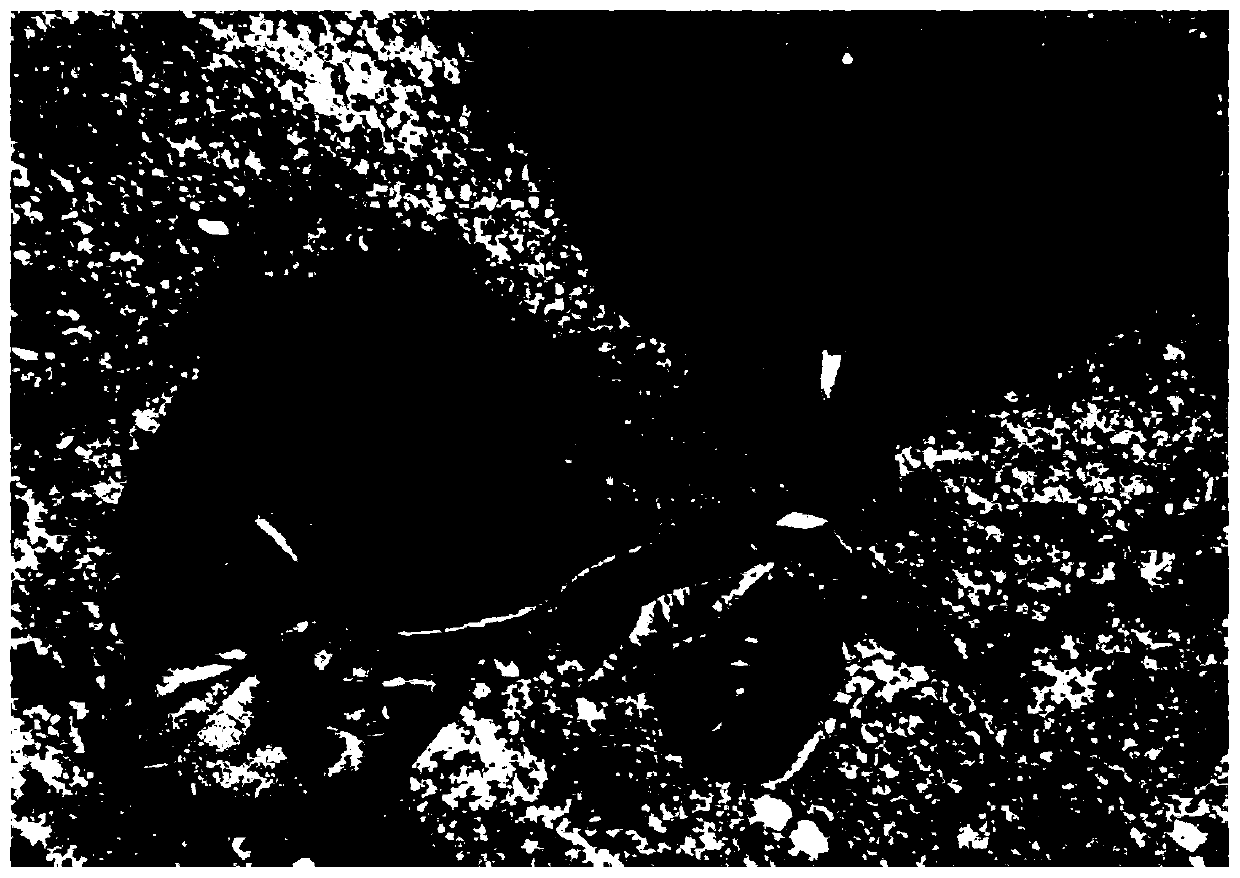A kind of method of rapidly breeding seaside hibiscus seedlings
A hibiscus and fast technology, applied in the field of hibiscus propagation, can solve the problems that it is difficult to meet the needs of large-scale breeding of fine seaside hibiscus varieties, unfavorable for the benign characteristics of seaside hibiscus excellent plants, and low natural germination rate of seeds, so as to avoid the introduction of harmful elements, The effect of saving germplasm material and improving reproduction efficiency
- Summary
- Abstract
- Description
- Claims
- Application Information
AI Technical Summary
Problems solved by technology
Method used
Image
Examples
Embodiment 1
[0032] A kind of method of rapidly breeding seaside hibiscus seedlings of the present embodiment, comprises the steps:
[0033] (1) Take materials
[0034] From May to the first ten days of July, respectively, selected wild perennial seaside hibiscus branches with excellent agronomic traits (one or more of high yield, long flowering period, and strong stress resistance) as the source of explants, and cut Cut into 0.5cm long micro stem segments with 1 axillary bud and 1 leaf, set aside;
[0035] (2) Pretreatment of explants
[0036] After the seashore Hibiscus microstem section in the step (1) is rinsed with running water for 10 minutes, carry out surface disinfection by 1.0 ‰ (w / v) potassium permanganate disinfection solution, and dry the residual disinfectant solution on the surface after disinfection for 5 minutes, and set aside;
[0037] (3) Induction treatment of explant adventitious roots
[0038] Place the morphological lower end of the Hibiscus seashore microstem sec...
Embodiment 2
[0044] A kind of method of rapidly breeding seaside hibiscus seedlings of the present embodiment, comprises the steps:
[0045] (1) Take materials
[0046] In the first ten days of August, the wild perennial seaside hibiscus with excellent agronomic traits (one or more of high yield, long flowering period, and strong stress resistance) was selected as the source of explants, and cut into 1.0 cm long, with 1 axillary bud and 1 leaf microstem segment (e.g. figure 1 ),spare;
[0047] (2) Pretreatment of explants
[0048] After the seashore Hibiscus microstem section in the step (1) was washed with running water for 15 minutes, the surface was disinfected by 3.0 ‰ (w / v) potassium permanganate disinfection solution, and the residual disinfectant on the surface was dried in the shade after disinfection for 8 minutes, and it was set aside;
[0049] (3) Induction treatment of explant adventitious roots
[0050] Place the morphological lower end of Hibiscus seashore microstem secti...
Embodiment 3
[0056] A kind of method of rapidly breeding seaside hibiscus seedlings of the present embodiment, comprises the steps:
[0057] (1) Take materials
[0058] In the first ten days of September-November, the year-old robust branches of Hibiscus hibiscus in the wild with excellent agronomic traits (one or more of high yield, long flowering period, and strong stress resistance) were selected as the source of explants, and cut Cut into 2.0cm long micro stem segments with 1 axillary bud and 1 leaf, set aside;
[0059] (2) Pretreatment of explants
[0060] After the seashore Hibiscus microstem section in the step (1) was rinsed with running water for 20 minutes, the surface was disinfected by 5.0‰ (w / v) potassium permanganate disinfection solution, and the residual disinfectant on the surface was dried in the shade after disinfection for 10 minutes for subsequent use;
[0061] (3) Induction treatment of explant adventitious roots
[0062] Place the morphological lower end of Hibisc...
PUM
 Login to View More
Login to View More Abstract
Description
Claims
Application Information
 Login to View More
Login to View More - R&D
- Intellectual Property
- Life Sciences
- Materials
- Tech Scout
- Unparalleled Data Quality
- Higher Quality Content
- 60% Fewer Hallucinations
Browse by: Latest US Patents, China's latest patents, Technical Efficacy Thesaurus, Application Domain, Technology Topic, Popular Technical Reports.
© 2025 PatSnap. All rights reserved.Legal|Privacy policy|Modern Slavery Act Transparency Statement|Sitemap|About US| Contact US: help@patsnap.com



